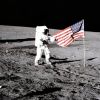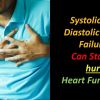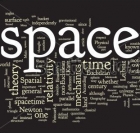Science & Space: 6 of 10
-
101.
 +25
+25New warp drive concept does twist space, doesn’t move us very fast
While it won't make a useful spaceship engine, it may tell us more about relativity.
-
102.
 +41
+41Even lab mice are getting VR headsets now
Neurobiologists say the iMRSIV gives mice a more 'immersive' experience than 2D projections.
-
103.
 +26
+26Eating The Hottest Peppers In The World For Science (okay I regret this)
-
104.
 +48
+487 Alarming Ways Statins Can Cause Harm
-
105.
 +46
+46Some deaf children in China can hear after gene treatment
After gene therapy, Yiyi can hear her mother and dance to the music. But why is it so noisy at night?
-
106.
 +34
+34The uncomfortable truth about AI’s impact on the workforce is playing out inside the big AI companies themselves
Alphabet and Microsoft are investing big in AI. But that’s creating a murky future for many tech employees.
-
107.
 +50
+50We May Have Been Completely Wrong About The Origins of Syphilis in Europe
When Italian explorer Christopher Columbus and his Spanish troops returned to Europe from the Americas in the late 15th century, they notoriously brought back the deadly pathogen responsible for syphilis.
-
108.
 +43
+43Opioids don't relieve acute low back or neck pain – and can result in worse pain, new study finds
Opioids are the one of the most prescribed pain-relief for people with low back and neck pain. But new research shows they don’t effectively relieve low back or neck pain and can result in worse pain.
-
109.
 +44
+44This megacity is the latest to shut down as pollution chokes swathes of South Asia | CNN
Lahore has become the latest megacity to shut down as pollution chokes swathes of South Asia, where nearly 50 million people have been breathing toxic air for nearly a week.
-
110.
 +44
+44Polycystic Kidney Disease Breakthrough (New Research in PKD) - 2023
-
111.
 +49
+49Study: Toilet paper adds to ‘forever chemicals’ in wastewater
Scientists have identified a surprising new source of “forever chemicals” awash in global wastewater: the ubiquitous paper product dangling next to most of the planet’s toilets. Toilet …
-
112.
 +34
+34Don’t let Big AI fool you: Piracy isn’t a business model
Sam Altman, the OpenAI CEO, is basically saying that he can’t make his product unless he steals from others.
-
113.
 +35
+35Why there is a new global race to the moon
Globally, more than 100 lunar missions are expected to take place by 2030, according to the European Space Agency.
-
114.
 +26
+26Can you actually avoid “forever chemicals” in your diet?
Today, more than 97% of the national population has PFAS in their bodies, according to the CDC
-
115.
 +35
+35Heart Failure - Do statins help or hurt?
-
116.
 +31
+31OpenAI Unveils A.I. That Instantly Generates Eye-Popping Videos
The start-up is sharing the new technology, called Sora, with a small group of early testers as it tries to understand the potential dangers.
-
117.
 +52
+52OpenAI confirms that AI writing detectors don’t work
No detectors "reliably distinguish between AI-generated and human-generated content."
-
118.
 +49
+49How thinking in a foreign language improves decision-making
Research shows people who speak another language are more utilitarian and flexible, less risk-averse and egotistical, and better able to cope with traumatic memories
-
119.
 +24
+24Oil and Gas Companies Are Trying to Rig the Marketplace
Fossil fuel interests are spreading misinformation that renewable energy is harmful, unreliable and worse for consumers.
-
120.
 +29
+29Micro- and nanoplastics in the body are passed on during cell division
Scientists investigated effects of tiny plastic particles on cancer cells in the human gastrointestinal tract, finding they are passed on to newly formed cells during cell division, and could promote the metastasis of tumours.




















